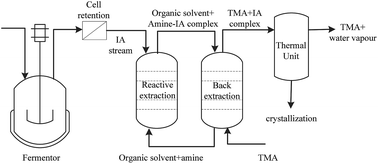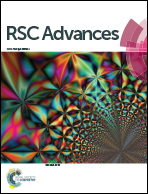Development of reactive extraction systems for itaconic acid: a step towards in situ product recovery for itaconic acid fermentation
Abstract
Process optimization by integration of bioconversion with product separation and recovery i.e. in situ product recovery (ISPR) is an important means to develop a sustainable and petrochemical-competitive biotechnological method for itaconic acid production. Since amine-based (reactive) extraction is known to be able to separate carboxylic acids efficiently, this technique was investigated in the present work. With the first step towards development of an integrated itaconic acid fermentation–extraction system, an extensive range of extractants consisting of eight different amines in various combinations with seventeen various types of diluents (alcohols, esters, alkanes) was experimentally evaluated for application in reactive extraction of itaconic acid. Compared to physical extractants using only diluents, reactive extractants based on amine-diluent combinations demonstrated higher extractive yields. Extractants with the highest extractive capacity were selected for further research aimed to optimize the concentration of amines for maximum extraction yield. Additionally equilibrium curves were obtained for the selected systems to evaluate extraction performance as a function of itaconic acid concentration. Experiments to elucidate the effect of medium components on the extraction performance were also performed. Nine reactive extraction systems were found to be most suitable i.e. trioctylamine, dioctylamine and N-methyldioctylamine as amine extractants solved in 1-octanol, pentylacetate and methyloctanoate. The critical results of this study form the basis for future investigations for large scale experiments with reactive extraction systems and development of appropriate ISPR configurations for itaconic acid.


 Please wait while we load your content...
Please wait while we load your content...